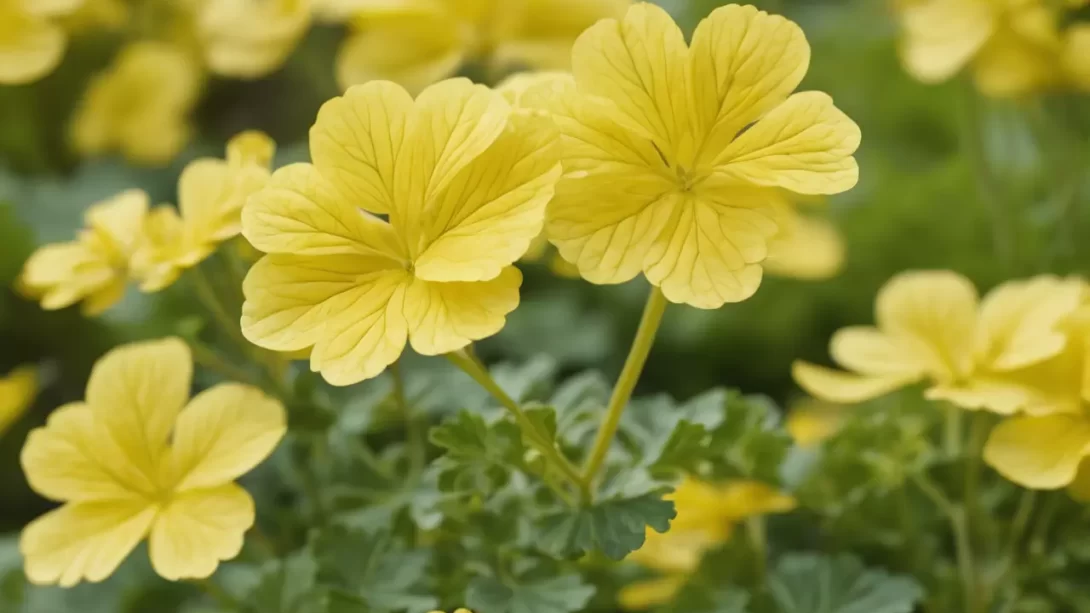Geraniums are beloved for their vibrant blooms and ease of care, making them a favorite among gardeners and plant enthusiasts. However, a common concern with these plants is the yellowing of their leaves. This article aims to delve into the causes of this issue and provide practical solutions to help gardeners maintain the health and beauty of their geraniums.
Geraniums
Geraniums, with their distinctively shaped leaves and a wide range of flower colors, are popular in gardens and as houseplants. There are various types of geraniums, including zonal, ivy, and scented geraniums, each with specific care needs. Healthy foliage is vital for the plant’s overall well-being, and yellow leaves can be an indicator of underlying issues.
Common Causes of Yellowing Leaves in Geraniums
Several factors can contribute to the leaves of geraniums turning yellow. Understanding these causes is key to addressing the problem effectively.
Watering Issues
Watering practices greatly influence the health of geraniums:
- Overwatering: Geraniums are prone to root rot when sitting in waterlogged soil, which often leads to yellowing leaves. Overwatering deprives roots of oxygen, causing them to deteriorate and affect the overall health of the plant.
- Underwatering: Conversely, not providing enough water can stress the plant, leading to yellow, dry, and wilting leaves. Geraniums require consistent moisture but also well-draining soil to prevent water from accumulating around the roots.
Nutritional Deficiencies
Nutrient levels play a crucial role in the health of geranium leaves:
- Lack of Essential Nutrients: A deficiency in key nutrients, particularly nitrogen, can cause leaves to turn yellow. Nitrogen is essential for healthy leaf growth and development.
- Soil Quality and pH: Poor soil quality or incorrect soil pH can hinder the plant’s ability to absorb nutrients. Geraniums prefer neutral to slightly acidic soil.
Environmental Stressors
Geraniums can be sensitive to their environment:
- Light Conditions: Both too much direct sunlight and not enough light can cause stress to geraniums, manifesting in yellowing leaves. While they enjoy bright light, harsh midday sun can be detrimental.
- Temperature Stress: Extreme temperatures or sudden temperature changes can shock the plant, leading to yellow leaves. Geraniums thrive in moderate temperatures.
Pests and Diseases
Pests and diseases can also be responsible for yellowing leaves in geraniums:
- Common Pests: Pests like aphids, spider mites, and whiteflies can feed on geranium leaves, leading to stress and discoloration. These pests often leave behind a sticky residue or visible webbing on the plant.
- Diseases: Fungal diseases like rust and bacterial blight can cause yellow spots or patches on the leaves. Over time, these diseases can spread, leading to significant leaf loss and weakening of the plant.
Diagnosing the Problem
Accurate diagnosis is crucial for effectively addressing the issue of yellow leaves:
- Overall Plant Health: Examine the plant for other signs of stress or disease, such as stunted growth, spots on leaves, or a general decline in health.
- Environmental Conditions: Assess the growing conditions, including sunlight exposure, temperature, and soil type. This can help identify environmental stressors contributing to the problem.
- Inspection for Pests and Disease: Check the plant closely for any signs of pest infestations or disease symptoms. This includes examining both the upper and lower sides of the leaves.
Solutions and Preventive Measures
Once the cause of yellowing leaves is identified, appropriate measures can be taken:
- Addressing Watering Issues: For overwatering, allow the soil to dry out before watering again. Improve drainage by adding perlite or sand to the soil. In cases of underwatering, establish a consistent watering schedule that keeps the soil moist but not soggy.
- Correcting Nutritional Deficiencies: Use a balanced, water-soluble fertilizer to provide essential nutrients. Conduct a soil test to determine if pH adjustments are necessary.
- Adjusting Environmental Conditions: Relocate the plant to an area with suitable light conditions and protect it from extreme temperature changes. Ensure that the plant has adequate air circulation to reduce disease risk.
Conclusion
Yellow leaves on geraniums can be a sign of various underlying issues, but with proper diagnosis and care, they can often be resolved. Understanding the specific needs and signs of distress in geraniums is key to maintaining their health and vibrant appearance. Here are some final tips and encouragements for gardeners facing this challenge:
- Be Observant: Regularly check your geraniums for any signs of stress or disease. Early detection of problems like pest infestations or environmental stress can make a significant difference in the health of your plants.
- Consistent Care: Establish a routine for watering, fertilizing, and monitoring your geraniums. Consistent care tailored to the needs of the plant can prevent many common issues, including yellowing leaves.
- Adapt and Adjust: Be willing to adjust your care practices as needed. If you notice signs of stress, don’t hesitate to change the plant’s location, modify your watering routine, or alter the type of fertilizer you use.
Remember, gardening is a learning process, and each plant can teach you something new. The yellowing of leaves in geraniums is a common issue, but it’s often a problem that can be solved with careful attention and adjustments. By understanding the various causes of this issue and responding appropriately, you can ensure your geraniums remain a beautiful and thriving part of your garden.
In conclusion, while yellow leaves can be a cause for concern, they also present an opportunity to learn more about your plants and how to care for them better. With the right approach and a bit of patience, you can keep your geraniums healthy, allowing them to flourish and brighten up your garden with their colorful blooms.



